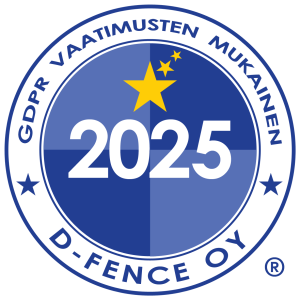The new algorithmic application developed by Lisker can identify logs with up to 95% accuracy on the sawmill line, bringing transparency, cost benefits, and certainty to the process for sawmills.
In the sawmill industry, every log is valuable. The more precisely a log is known throughout the entire process, the better its true value can be utilized. Lisker has developed a solution that elevates log identification to a new level by leveraging algorithms originally used in DNA sequencing.
An Idea over Coffee
Software developer Oskari Keränen from Lisker explains that the idea originated from a coffee break discussion where the team pondered how logs could be linked more reliably across different measurement points. What if a set of characteristic features were created for logs, which would then be searched for throughout the entire log queue – much like searching for a single gene within a human genome. If each log were given an identifier based on its characteristics, its journey along the sawmill line could be reliably tracked from one measurement point to another.
The first prototype was quickly tested, and it was soon observed that the method worked excellently on the sawmill line as well.

Software developer Oskari Keränen.
First Results from Production
The solution was tested in production at our client’s sawmill, and the initial results were promising: the success rate for identifying logs between different measurement points rose to approximately 95 percent, whereas previous methods often remained at a 40–50 percent level.
However, Oskari reminds us that no system is perfect. In this sample, 5% of logs remained unmatched, but the most important thing is that no incorrect identifications are made. If a log does not find a definite match, it is left unlinked – thus ensuring the system remains reliable in a production environment.
Benefits for Sawmills
Log DNA tracking offers sawmills new opportunities to utilize measurement data and track logs more precisely, for example:
- Identification of Bark Thickness. Bark thickness can be determined by knowing the log’s diameter before and after debarking and comparing this data.
- Log Data Synchronization. Logs can be reliably identified at different measurement points, even if one log is missing in between. This reduces errors and improves analytics.
- Data Integration. Log measurement data can be utilized at various stages of the process.
- An Adaptive and Cost-Effective Solution. The algorithm adapts to various measurement environments and data sources, making development and implementation cost-effective. Lisker’s solution also utilizes data from existing ProfiScan™ sensors and operates software-based without expensive specialized equipment or heavy maintenance costs.
Opportunities for the Future
Currently, identification performed with the new algorithm operates between log feeding and the sawmill line. In the future, the aim is to extend the use of the same method further into the process – potentially all the way to boards.
The first development steps have been taken rapidly: the idea was taken into development in November 2024, and by February 2025, the algorithm was already in production use. This demonstrates Lisker’s approach to boldly testing new innovations in practice and shaping them into solutions that improve customers’ daily operations.
More Information:

Panu Toukola
CTO, Lisker Oy
panu.toukola@lisker.fi
Tel. +358 50 554 1338
Lisker Oy
Lisker Oy is a Finnish technology company founded in 1987 that develops machine vision and optimization-based measurement and control systems for the sawmill industry. The company’s solutions cover the entire sawmill line – from log feeding and rotation to the grading of finished timber. Over 300 deliveries to 16 countries and more than 10 million cubic meters of logs processed annually attest to the reliability and scale of Lisker’s solutions.


